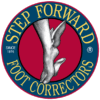According to SWFACenter, “Typically, high-quality prescription orthotics last between two to three years. Custom orthotics are designed to withstand wear and tear from standing and walking, but using them on a daily basis will inevitably result in damage over time.”
As you go about your day, wearing the appropriate orthotics can assist in reducing discomfort in your ankles, feet, and legs. However, after a few years of usage, you may find that your orthotics aren’t as comfy as they once were. You might do more damage than good if you plan no walking with worn-out orthotics
The Lifespan of Your Orthotics
So how often should you replace your custom orthotics? Top-notch prescription orthotics often last around two to three years. Custom orthotics are made to endure the wear and strain of walking and standing, but they will unavoidably wear out over time if used on a regular basis. Jogging, for example, puts an inordinate amount of stress on the shapes and soles of the orthotics, which causes them to wear out even faster.
The type of material utilized to create your inserts has an impact on how long they endure. Functional orthotics composed of semi-rigid materials have a longer lifespan than accommodative orthotics made from softer materials. Cork, foam, and leather inserts may need to be replaced on a yearly basis.
Even with brand new inserts, some lifestyle changes may lead to the need for replacing the current pair of orthotics. For example, pregnant women frequently experience alterations in their gait that, if not addressed with new orthotics, might create an uncomfortable experience.
If you’ve had major surgery, such as a hip or knee replacement, this can alter your walking pattern and necessitate the replacement of your orthotic inserts.
So, how long do you think you’ll get out of your particular set of orthotics?
This is dependent on a number of variables. The following are a few of the most important:
- Construction of the materials. Soft orthotics consisting of cork or silicone tend to endure longer than stiff and semi-rigid orthotics made of materials like graphite, or plastic.
- Your body mass index. People who are heavier put greater strain on their orthotics than those who are lighter, leading them to wear out faster.
- What you do with them. Your orthotics are likely to wear out faster if you participate in a lot of strenuous, high-impact activities (However, you should still strive to be as active as can – that is, after all, the whole reason for wearing orthotics!)
- How often do you put them on? We usually advise that you wear your orthotics every day, for the extent of time you would be walking around. Some people, on the other hand, may choose numerous pairs, or pairs for different sorts of shoes, or shoes that are exclusively used for certain hobbies. You may extend the life of your pairings by rotating them.
- How you are treated by life. It’s likely that the way you walk at 70 won’t be the same as it was when you were 40 years old. As you age, your feet will expand and flatten, so they won’t be precisely the same form and size. As a result, a pair of insoles that fits you well now may not always fit you properly in the future.
When Is it Time for a Replacement?
Examining the look of your orthotics is one of the simplest methods to identify if they need to be replaced. Cracks, rips, and thinner soles are all indicators that your orthotics need to be replaced. Discomfort and pain are additional indicators that your orthotics aren’t giving your body the support it requires.
However, there are a few additional clear indicators that you could need new orthotics, or at the very least, that you should schedule your next check-up:
- The ache has returned. Pain is usually an indication that something isn’t right. You may require new orthotics, as well as an extra or alternative treatment.
- Damage indicators. A few scuffs or scrapes are likely to be acceptable. Cracks, wrinkles, and other indicators of degradation in the structure are not.
- Changes in your way of life. Significant occurrences or “transformations” that occur after you receive your orthotics may necessitate the purchase of new ones.
- Wear on the treads. Examine the bottoms of an old pair of shoes every now and again. It’s likely that your inserts aren’t balancing you properly if you observe uneven or odd wear patterns.
Custom Orthotics Are Built to Last
They aren’t invincible, to be sure. They’ll ultimately wear out, or you could outgrow them if your body mechanics or your activities change significantly over time.
However, unlike the inexpensive, flimsy insoles you can buy over the market, which may only last a few months, virtually all bespoke orthotics will last at least a year, and often more like 3-5.
Some people have gone much longer than that!
The quality of the materials and the tailoring to the person are the two key contrasts here. Custom orthotics, in addition to being more mechanically durable overall, manage stresses more effectively since they fit your feet precisely rather than roughly.
Step Forward Custom Orthotics
Step Forward USA manufactures state-of-the-art proprioceptive insoles which are distributed to many countries across the globe.
For foot problems, our orthotics offer relief as well as helping with problems related to misalignment of the feet, including posture (ankles, hips, knees, neck, and back). Some common foot problems they can help with are Bunions, Plantar Fasciitis, Hammertoes, and many more.
Learn more about our foot correctors here.

